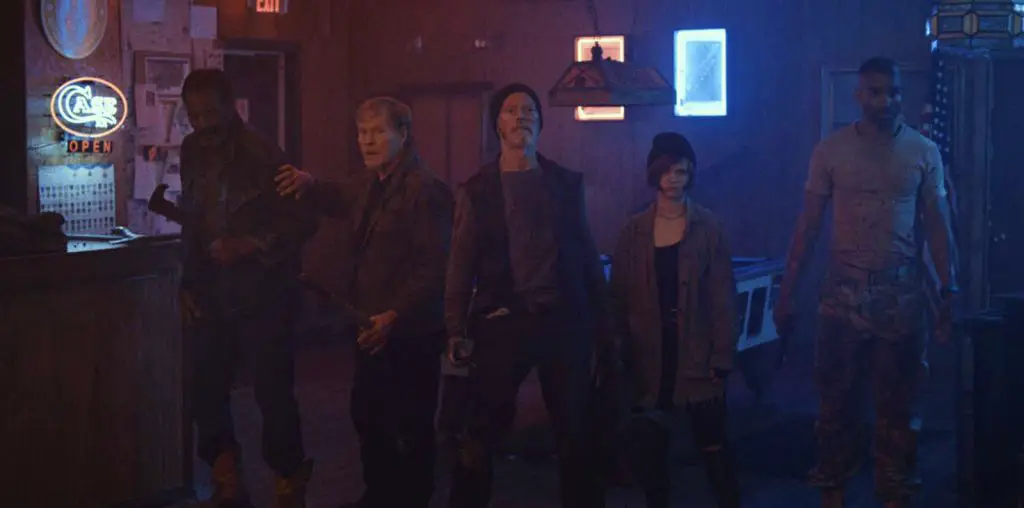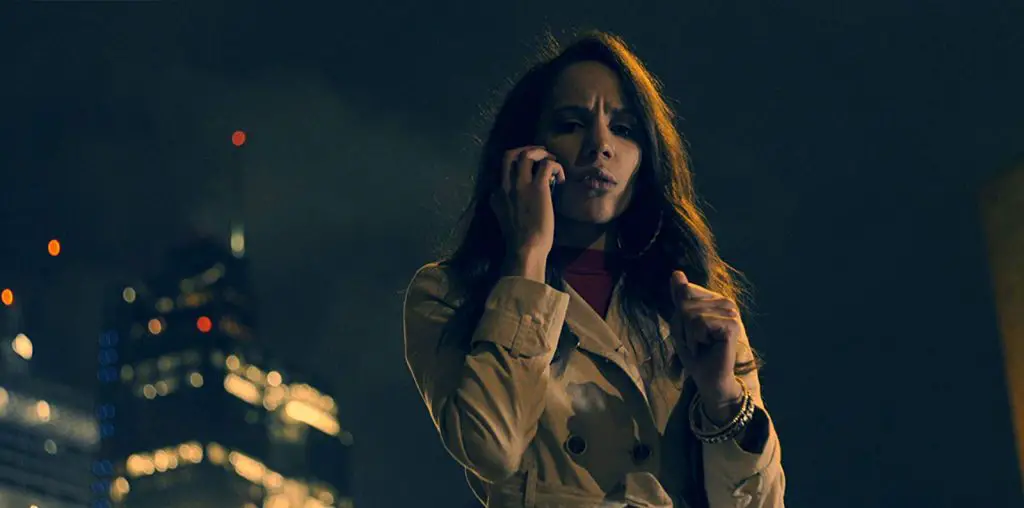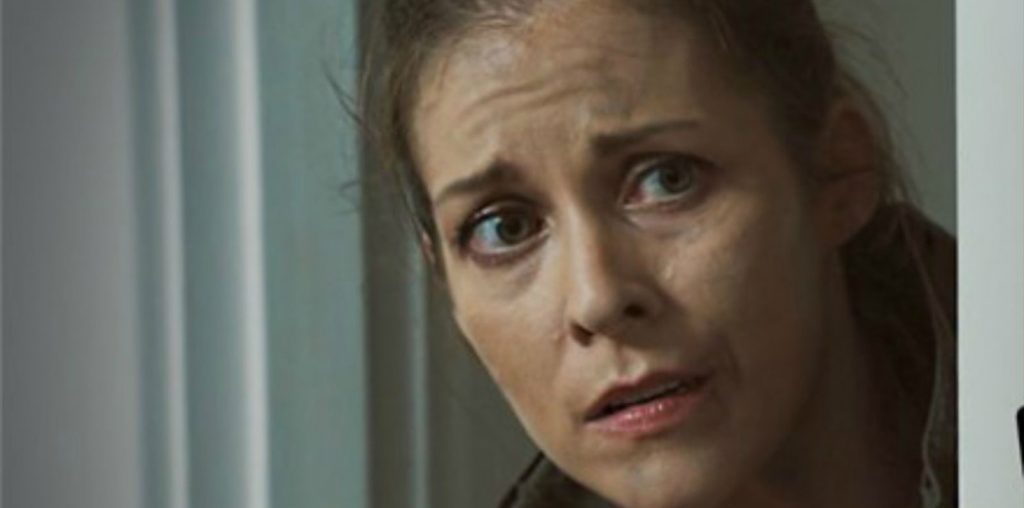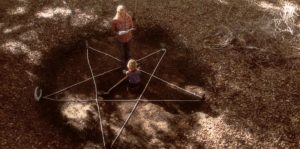
The other prominent issue would be Oralee and Nathan themselves. Not the actors, who are quite good in underwritten roles, but the characterizations. For one, their bond is not firmly established. Why would Oralee follow her little brother instead of just bringing him back home? There is no answer given, as the two have about 2-minutes of screentime before they escape to the woods. As such, when certain things happen to them, it is hard to empathize or care. This makes a lot of the film, especially in the first half, pretty dull.
About the time they run across the man about to commit seppuku, Antrum picks up considerably. Encountering the odd people who add to the ever-increasing chilling atmosphere finally gives the movie a sense of urgency that it sorely needs. From that point on through the absolutely amazing ending, Antrum is thrilling.
Maksymilian Milczarczyk’s cinematography is quite good. Again, the movie never truly resembles its forebearers, but the forest is filmed as a creepy, living entity. The surreal aspects are also unnerving, which gives the film a nice boost of adrenaline once everything falls into place.
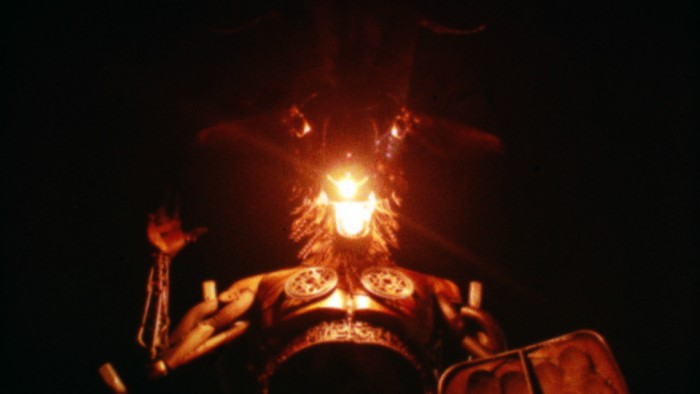
“Given the film’s commitment to its gimmick, that it utterly fails to look like a film from the 1970s absolutely hurts it quite a bit.”
It is the actors that bring Antrum to life. Rowan Smyth vacillates between precocious and a little bit scary quite well. His screams, while he is having bad dreams, are unsettling and force the audience to question if what they are watching is happening, or all part of his waking nightmare. Nicole Tompkins is dynamite as Oralee. When she confesses to Nathan about making up the idea that one could dig a hole to Hell, her regret is palpable. Despite their characters’ lack of onscreen time for a bond to be forged appropriately, the actors play off of each other well and make even those more problematic moments work because of it.
And finally, for me, the story about the film is much more interesting than the story of the film. I really loved all the talking head, documentary-style bookends, and kind of wish the whole movie was that. Maybe punctuated with scenes from the “missing movie” to prove a point, then the epilogue would tell of horrific fates of all those involved in the making of. This would get around some of the more problematic issues of presenting a modern-day film as a lost movie from the 1970s. It would also allow the best sequences to still be featured, so the movie still has that intensity and frightening atmosphere.
Antrum: The Deadliest Film Ever Made has a very specific audience who will eat up every second of this movie, because it is a throwback to the sleazy, grindhouse days that produced so many uneven yet effective horror titles. And thinking about uneven yet effective is the best descriptor for this film. So maybe it is more accurate than I am giving it credit for.
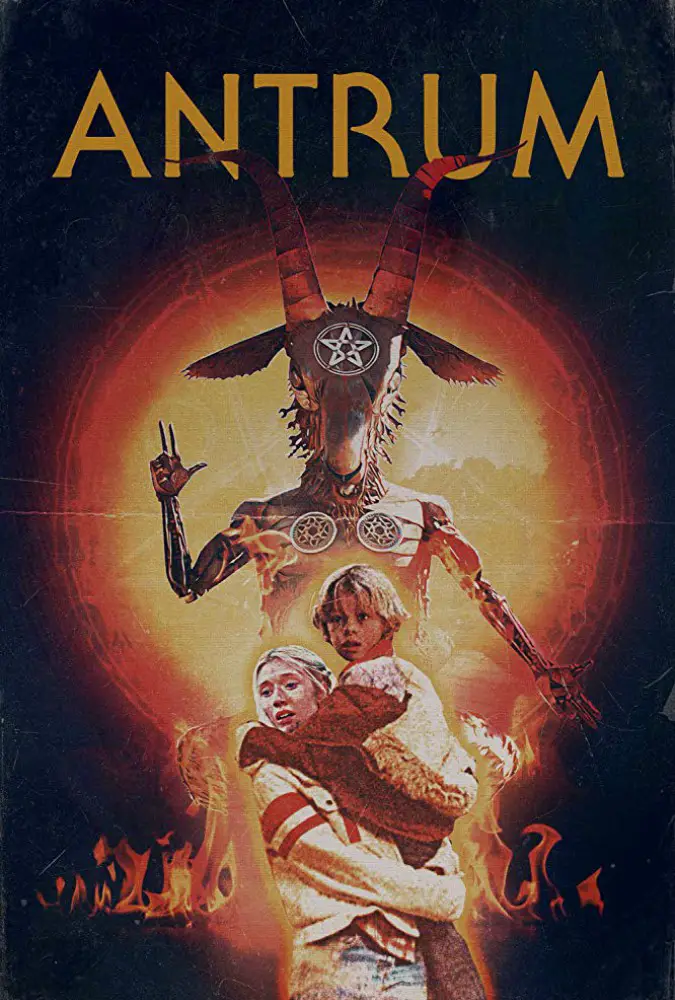
"…grain, flickers, distortion...to make the supposedly cursed film look like it is from the 1970s are clearly added digitally."
